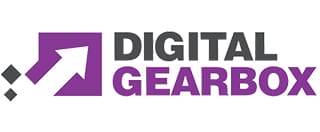There’s no beating around it: COVID-19 represents a significant challenge, regardless of what business you’re in.
But we have to make the best of this unique and difficult challenge. For some businesses the current climate might require a closure. Hopefully that doesn’t apply to too many.
For others this downtime can be spent reviewing systems, processes and investments in marketing.
As a specialist marketing agency the latter is obviously on our minds quite a bit right now.
The official saying going around right now is “don’t slow your marketing or sales”. While we agree with that sentiment, some cuts or revisions might be necessary.
With Google Ads in mind, we’ve put together some ideas on things you can look at to optimise your current advertising campaigns. These recommendations won’t guarantee results, but they should hopefully get you thinking about ways you could adapt to rise to the occasion.
Campaign Refocus
Review your campaigns in light of the current situation. Do you have any products or services that are likely to be affected in the immediate future? If yes, we’d suggest either turning down considerably, or turning off altogether.
Instead, focus your attention and click spend on a smaller group of campaigns dedicated to the products or services that can positively affect your bottom line.
Combine Keywords and Audiences
Using Audiences for Search campaigns isn’t exactly new, but it’s surprising how many advertisers aren’t currently taking advantage of potentially richer results. Usually we’d recommend setting up a couple of relevant audiences to observe performance.
Here’s a great example of what we mean:
Last year we combined Audience and Keywords to help drive sales for a premium body wash brand over Valentine’s Day weekend. Using 3rd party data from Google we set bid adjustments for anyone searching for our products who were also in a relationship or actively dating.
Sounds simple, but this is something that can make a huge difference when working on a reduced budget. All that is needed is an understanding of the audience you want to go after, and a little strategic thinking.

eCommerce? Segment Your Products!
Turning to Google Shopping to make up for the lack of store footfall? Makes sense to us. The trick to better results using Shopping is to ensure your campaign is properly segmented by product or product type. Separate your best-selling products, or the kind of products that might sell in bulk, and ramp up the individual bids for these.
By segmenting your campaign into product categories you’ll be able to much more easily determine what’s working and what’s not. Segmentation can take some time depending on your product range, but this approach is strongly recommended, especially right now.
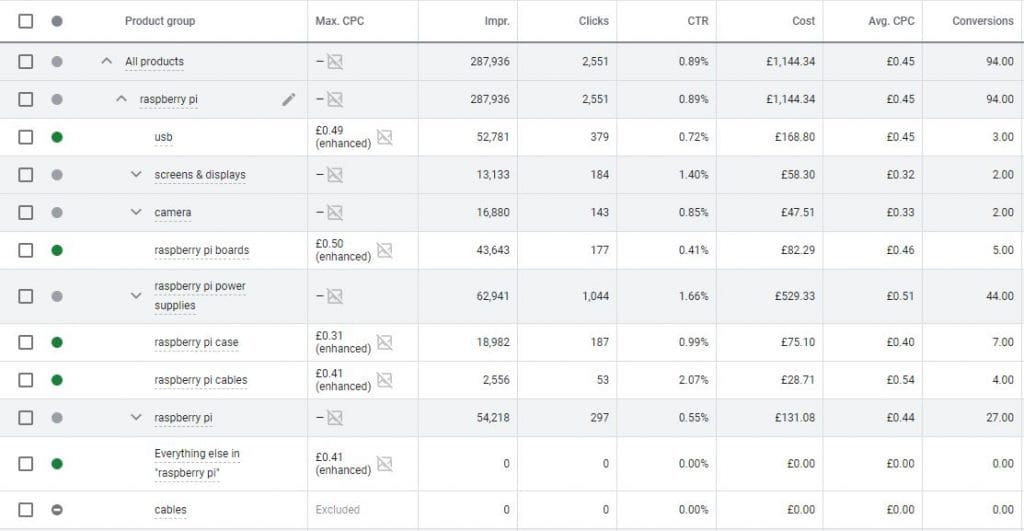
Ramp up Remarketing and RLSA
Instead of spending so much time and money on acquiring new traffic, why not use this time to attract previous customers or website visitors back to you? Retention is usually much cheaper than new acquisition AND is more likely to convert.
Use Remarketing to reach out to previous customers or visitors. Review your ad content to make sure this is fresh and relevant to the type of customer you’re looking for. Spending some time refining your audiences to improve the quality of returning traffic might also be a good idea while you have the time.
RLSA works the same way as Remarketing but instead of reaching previous visitors on the Google Display Network you can be found when they’re back searching on Google. This tactic is great when you’re looking to better understand user search behaviour without paying huge sums of money for broader keywords.
Review Display Placements & Exclude The Rubbish
Using Google’s Display Network of over 3 million websites and apps could be a great way right now to reach new audiences.
When reviewing Placements we’re usually looking at user behavior rather than just the website itself, however, there might be some high-risk websites (drugs, weapons, sex, hate speech) that you don’t want associated with your brand.
If you want to do this, but don’t have the time to potentially review thousands of placements we recently made available a downloadable list that will exclude over 19,000 potentially dangerous websites and apps from your campaigns.
Location Settings
Right now globalisation for most advertisers is pretty much kaput. If you’re affected by lack of transportation solutions or a distant customer base that is no longer accessible it might be a good idea to localise your campaigns.
Don’t want to turn your global or national campaigns off entirely? Perhaps consider reducing bids in specific locations by using the bid adjustment by location facility.
The opposite could be applicable for any business that generates local business. Maybe for the time being it might be worth looking further afield to attract new customers.
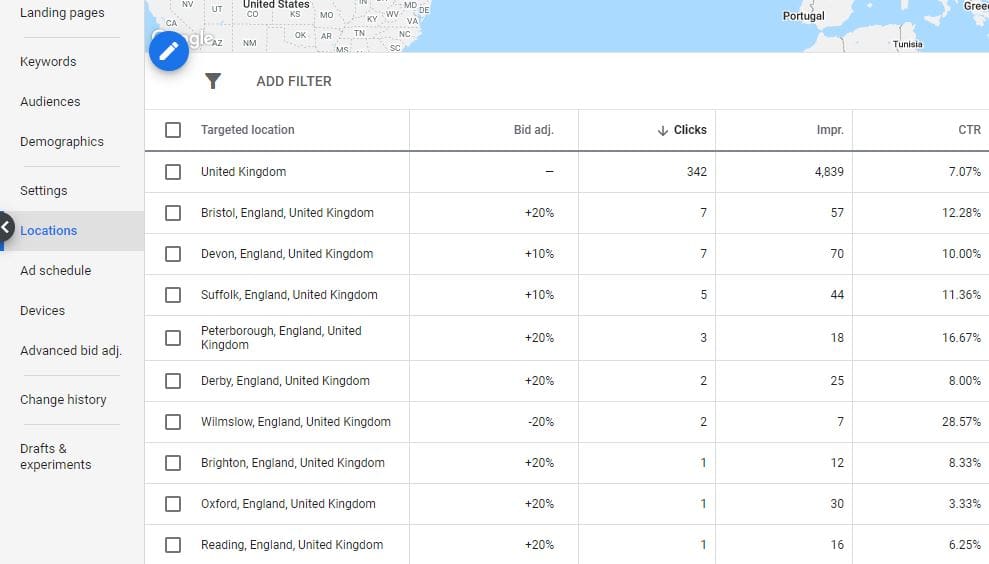
Device Adjustments
Recent trend reports reported that mobile traffic dropped by nearly 25% in March*. This makes sense given that most of us are currently at home. A large number of advertisers have long favoured having their ads seen on mobile devices over anything. If this is you it might be worth reviewing your current bids by device and adjusting accordingly.
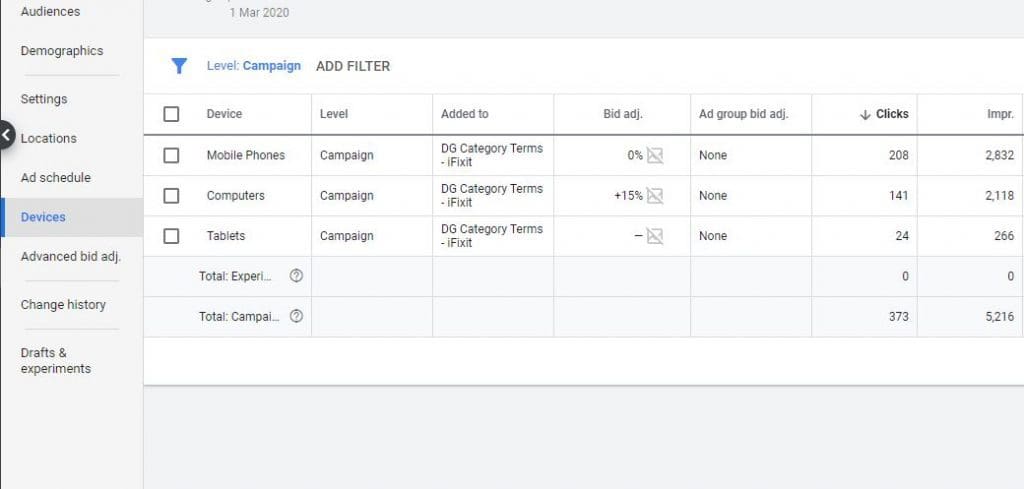
Reconsider Search Partners Networks
Google partners with other search engines to deliver ads. This collectively is known as the Search Partners Network.
If, like us, you’ve switched Search Partners delivery off on your campaigns, now might be a good time to consider switching it back on. This tactic will likely result in a spend increase, but it might be worth a shot given internet use is currently surging. Improved visibility across platforms could be invaluable for your brand at this time.
Tighten up Keyword Match Types
If you know what terms work and are important, focus on them rather than capturing all the broad traffic that may or may not be relevant. This might be something that happens naturally if you decide to refocus your campaigns as mentioned above.
If not, our recommendation would be to review your keyword performance over a longer period of time, say the last three months. Look at what has been driving the bulk of your performance. If these keywords are broad, use the Search Terms report to see how you can turn these broader terms into phrase, or even exact match keywords.
Review Your Bids
In our ever-changing world bids are something we usually recommend you spend time reviewing. If you’ve not found the time to do this, now might be a great time to do so.
We’d recommend by first looking at the Top of Page and First Position recommendations. Do you need pay for that first position? Are you overpaying on any terms that aren’t giving you the ROAS (Return on Ad Spend) that you want?
If your campaign features a lot of keywords this can be quite a daunting task. Our recommendation for a quicker process would be select all keywords and use Google’s bulk bid modifier. Before changing the bids we’d suggest hitting “preview” to see what changes are going to be made.
Unfortunately this process won’t identify the keyword bids that can be reduced. Our recommendation here would be to add the aforementioned First Page, Top of Page and First Position columns so you can see what you could potentially reduce to make a saving.

Search Term Review / Add Negative Keywords
Another task we would consider a near-daily action. Regular reviews of search terms that are triggering your ads can help you identify terms that are wasting your budget. If this isn’t something you’ve done for a while, open up the date range for a longer report.
Daunted by a large number of terms? Save time by sorting the columns by the KPIs you’re interested in. Cost will likely be the one to sort by in this instance.
Once you’ve identified any terms you consider irrelevant to your campaign add them in as negative keywords. Now added into your campaign, these negative terms should prevent your ads showing for similar searches, potentially saving you money and boosting quality scores through improved relevance.
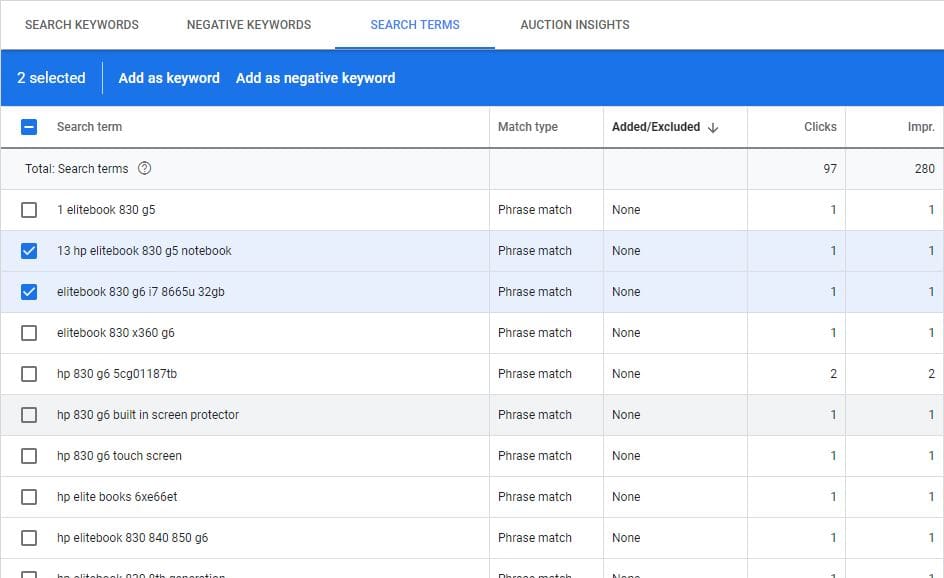
Remember, this should all only be temporary. Your business should survive. Think ahead and keep in mind this could be a good time to start conversations with prospects. A good time to start replenishing your funnel.
Stay well, and let us know how you’re getting on.
